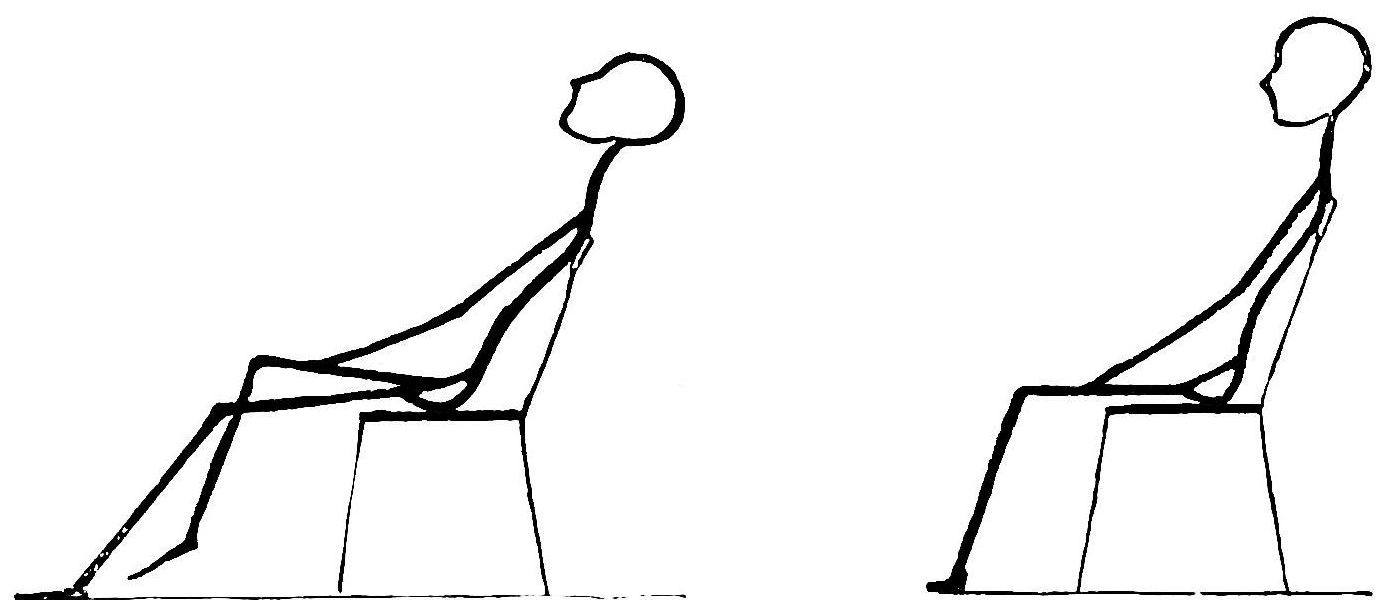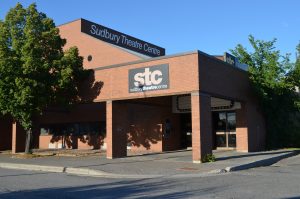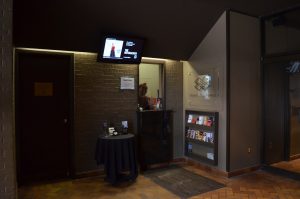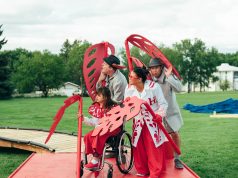
Theatres often presume an able-bodied audience member capable of following the spatial and social scripts for movement within most professional venues. But maybe you are someone who cannot sit in dark spaces. Or feel uncomfortable when people stare at your involuntary tics. Maybe sudden noises upset you and crowds are disorienting.
Relaxed Performances (sometimes called “sensory-friendly performances”) have emerged in theatres across the U.K., U.S., and Canada in response to these predicaments. These shows are open to everyone, but they are specially adapted for those who might find the normal conditions of a theatre prohibitive. As yet, there is no systematic set of changes or program of certification to qualify a performance as relaxed. Instead, there is something like an à la carte menu from which companies can build a relaxed show. Every iteration offers an opportunity to fine-tune and try out new methods.
I encountered relaxed performances when I started at the Sudbury Theatre Centre (STC) last fall.STC programmed its first relaxed performances for the 2016-2017 season, committing to one performance for each of the mainstage productions.* Modifications in its relaxed shows included: keeping the house lights dim and doors open throughout the performance, creating “chill-out” zones outside of the auditorium, and reducing the intensity of loud or sudden technical effects. We also extended curtain speeches to include a synopsis and to allow actors to introduce their characters. This was especially important for our holiday show, It’s A Wonderful Life.

It’s a Wonderful Life adapted the Frank Capra movie as a live radio broadcast set in the 1940s. Scenes jumped between the station and others that sprung to life from the “listener’s” imagination. Actors played multiple characters, sometimes performing quick costume changes on stage for comedic effect. All this might have been confusing for an average viewer, but even more so for patrons with certain cognitive conditions. The curtain speech also previewed a moment in the play where one character violently shakes another. The idea was to demonstrate that the situation remained safe despite looking otherwise. At the end of the performance, patrons also had a chance to meet the cast in the lobby.
STC had intended to, but did not, produce visual stories as tools to help patrons familiarize themselves with the building in advance of their visit. Visual stories offer a kind of tour, pairing photos with short descriptors and moving in order from the patron’s entrance to their exit. For instance, you could start with a photo like this welcoming them to the building:

followed by one of Box Office explaining how they get their tickets:

Recently, I presented on STC’s experience with relaxed performances at a conference. Thank you to the dramaturgs whose thoughtful contributions have helped shape this piece. One concern I raised was how relaxed performances can attend to the specificity of disability and the experience of individuals living with them, while also aiming to be broadly inclusive. Is the model too generic to actually serve its purpose? A first step might be consulting with local organizations that are more directly involved with the demographic one hopes to attract. This was another oversight on STC’s part. Had we worked more closely with these services, we might have developed relaxed strategies better suited to our local community. If in a larger city, another idea would be to borrow from Inside Out Theatre’s Good Host Program. The Good Host facilitates accessible performances beyond relaxed ones (e.g., ASL interpretation, audio-described, etc.) in venues across the Calgary. By coordinating with other companies and producing a calendar of events well in advance, the program offers more choice to potential patrons and greater scheduling flexibility.
Another concern of mine: what about the aesthetic possibilities of relaxed performances? The literature often stresses that, apart from minor tweaks, the performance itself remains immune to the relaxing process, thus protecting artistic integrity. But there is room to consider things differently.
‘Extra-Live’ is a term that has been pitched in lieu of ‘relaxed’ in some U.K. circles. As journalist Natasha Tripney writes: “…[‘Extra-live’ is] not just a semantic alternative to the word ‘relaxed’ but more of a provocation, something that invites theatremakers and audiences to question ideas of traditional theatre etiquette and create as open a space as possible….” Instead of instructing actors to politely ignore any unexpected movements or noises from the audience, what if they incorporated it into the performance to some degree? Acknowledging the shared space between performer and spectator can be exciting, perhaps revelatory. It honours theatre as an intersubjective encounter, a potentially unsettling event.
Finally, what better than the audience of a relaxed performance to point out that no two people experience any event the same way. If we take this plurality of experiences as a premise, then how can we better support artistic creation to reflect it? When discussing accessibility in the arts, it’s important to include artistic as well as audience development. On that note, I’d like to recognize the work that the Playwrights’ Theatre Centre is doing with ACK Lab, which could be said to “relax” the creation process itself, helping artists with lived experiences of disability to produce their work.
Much has been said of theatre as a space to challenge conventional beliefs and foster human connection. But the physical space and normal operations within can be coercive and exclusionary. Relaxed performances may shift the paradigm closer to theatre’s ideal. The practice continues to develop, with signs that attention is now turning to its artistic possibilities. As for STC, we will continue to provoke, to rewrite the script, acknowledging and amending the blindspots in our place of seeing.
*Edited September 27, 2017. The article previously stated that STC was the first company in Canada to commit to one relaxed performance for each of its mainstage productions. However, Theatre Passe Muraille in Toronto has programmed relaxed performances for each production for the past two seasons. –AW









